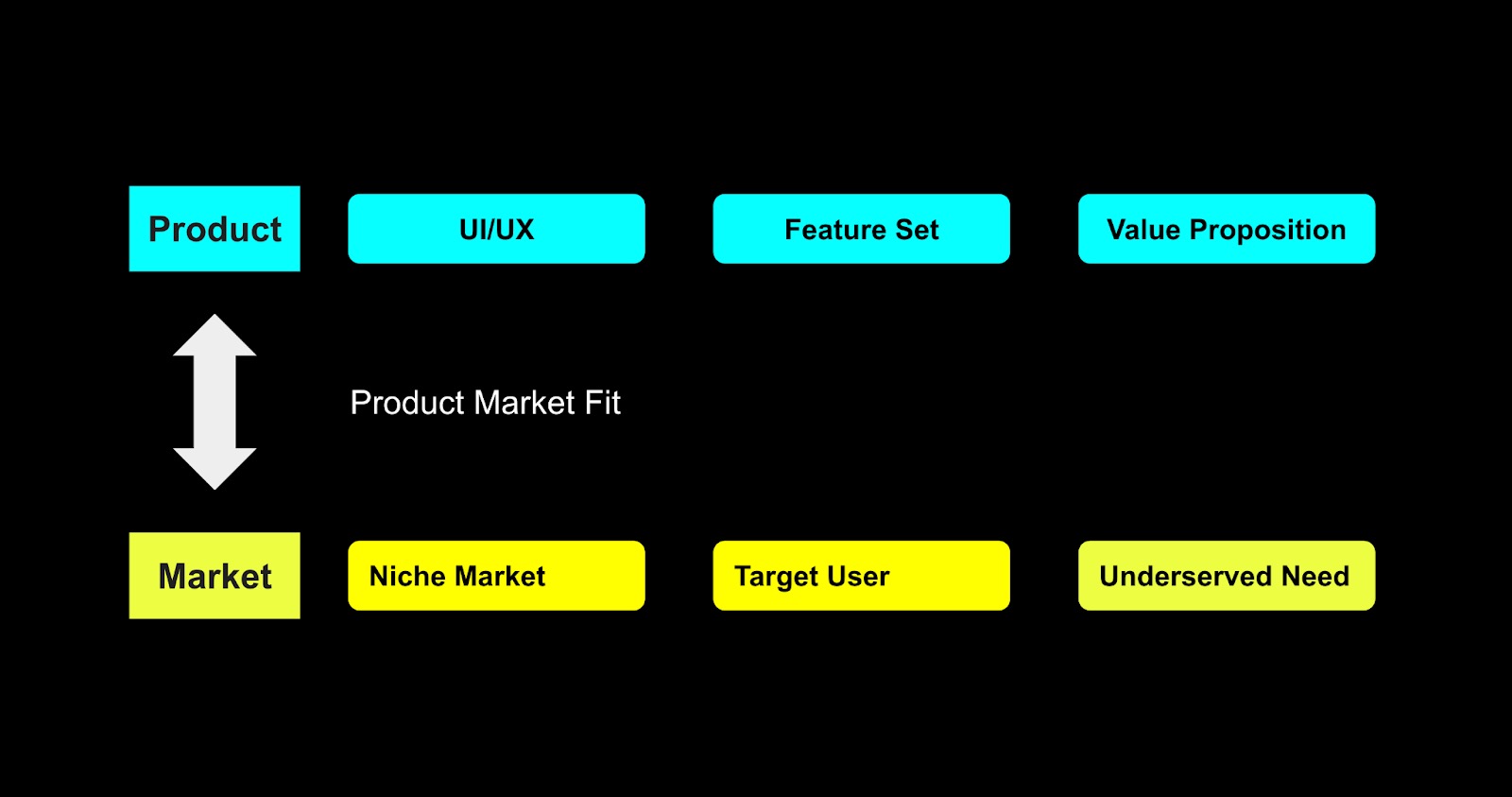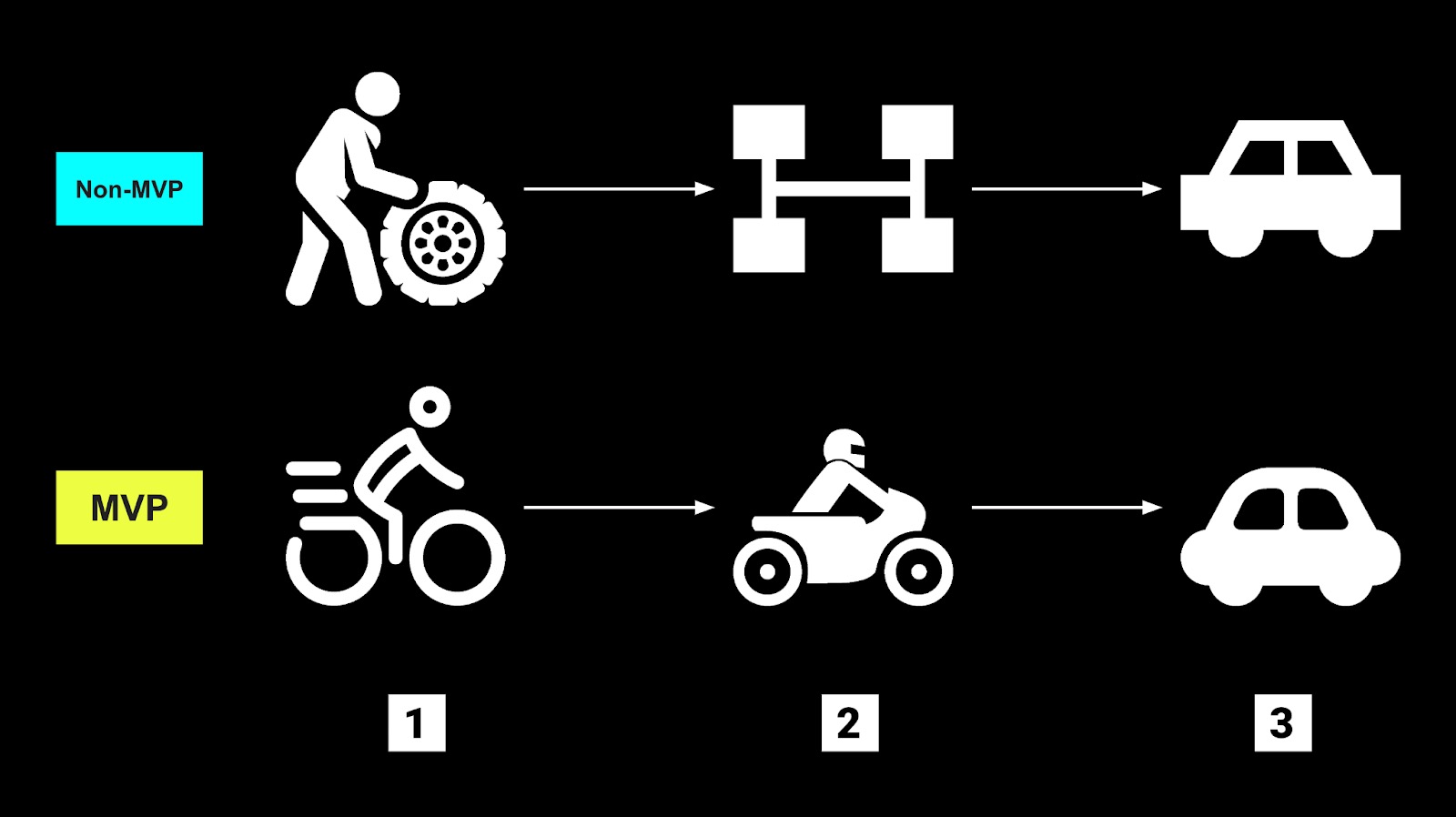Too often, we’ve seen Crypto and Web3 products grow well in a short period of time, but then lose users quickly, and the project goes into a “death spiral” and fails. In the traditional world, the stock market has less and less direct impact on entrepreneurs and products, but in the Web3 world, the currency market has a particularly strong impact: bull markets rise and bear markets kill more than 90 percent of projects. The common feature of these projects is that in the bear market, the Token price issued by the project side falls all the way, so that the Token incentive measures fail and even bite the interests of users, resulting in a serious loss of users.User growth is the long-term goal of the product, the core of which is to build a system composed of products and users, constantly iterate the product, gradually gain market share, and realize the continuous growth of user scale and value. Head Dapps such as Collectibles, DeFi, GameFi, and MarketPlaces showed a sharp drop in active addresses from the beginning to the end of 2022, while Social&Media showed a rapid increase. My thoughts on Web3 user growth are recorded below.
| Collectibles | DeFi | GameFi | MarketPlaces | Social&Media | |
| Beginning | 800K | 14.62M | 28.07M | 6.45M | 400K |
| End | 180K | 5.62M | 13.26M | 1.57M | 6.68M |
| Change | -77.50% | -61.56% | -52.76% | -75.66% | 1583.75% |
Basic ideas for Web3 user growth
The bull and bear cycles in the currency market have a huge impact on user growth, but entrepreneurs should not be constrained by macro factors. In order to increase users, the first thing is to find the “Market” that matches the Product, that is, the “M” in PMF(Product Market Fit). Instead of blindly satisfying the whole “M” or “big M”, you should combine your own product characteristics and resource endowment to locate the M that fits your own. Then it will go vertically deep first, and then consider horizontal expansion after it has achieved the first-tier market share in the single market. For Chinese entrepreneurs, it is not wise to give up the Chinese community and Chinese users that they are good at dealing with, which is equivalent to giving up one-third of the world’s B and C terminal users and giving up their basic business.
A Minimum Viable Product (MVP) is a great idea when it comes to product design and development. It means that in the process of product launch, basic functions are first introduced to meet the minimum business closed-loop in the core scene, and then iteration, optimization, and enhancement are done according to market feedback, and finally, the product is iterated in line with the optimal solution of the market and users. Don’t try to build a “whole” product with a perfect vision. Instead, simplify user usage and build PMF-compliant MVP products by identifying the biggest “one” problem that solves them. In this process, developers often have to say ‘no’ to hundreds of good ideas.
If PMF can be understood as the state of the product when it matches the market, then MVP is an effective way to get the product to PMF. Bringing a PMF-compliant MVP To Market is GTM(Go To Market). The purpose of GTM is to acquire and retain users, and its acquisition rule usually follows the “funnel model”: from the top of the funnel to attract new users, user conversion and retention at the bottom of the funnel is a process of decreasing users.
Traditional Web2 project GTM includes pricing, marketing, sales, and other links, and customer acquisition indicators include website click rate, average user revenue, closing time, and so on. While the Web2 GTM framework provides a mature set of gameplay, Web3 GTM is much richer. “Community” belongs to the unique category of Web3 GTM, which is the user growth of the traffic pool. Web3’s GTM strategy will be accompanied by community incentives mediated by tokens and a Referral plan to refer new users by tokens.

PMF(Product Market Fit): Find the right market and meet the real demand
Regarding product market fit PMF, the following questions should be considered:
- Why are we doing this product/feature?
- Does the product/feature respond to the needs of the market?
- Why do this product/feature now instead of later?
CBInsights.com once conducted a survey on the reasons for the failure of entrepreneurial projects and found that No Market Need ranked first, accounting for 42%, which was higher than the second place and the third place was Not the Right Team. Because this issue is so important, developers should think about it during product planning, rather than waiting until the product is ready to go to market. It’s easy to overlook the market research you should be doing because of your bias and paranoia.
Finding PMF is a cyclic and iterative process. Through continuous feedback collection and verification completion, the product can reach a degree of relative matching with the market. In the subsequent verification process, the feedback information can be returned to the specific steps for optimization and improvement, so as to improve the matching degree between the product and the market.

- Find the right market segment, lock the target user group, find the unmet needs
Find the right market segment, and find the right target users, this will ultimately determine the extent to which the product can meet the needs of the target users. We segmented a large market to target the user group, so as to build the user portrait library and do demand analysis. After creating a profile of the target audience, the next step is to understand their needs. When trying to create value for users, you also need to identify good market opportunities for that need. If the user needs of a market are already well met, then don’t enter the market again, you must find a new market. When you find a market where the needs of users are not being well met, you can jump in.
- Develop product strategy, define the value proposition, and highlight differentiation and core competencies
Users are bound to compare various competing products with their own products at some point in the future, so user satisfaction largely depends on the highlights of their own products, and it is these highlights that constitute product differences. The value proposition is to highlight the Highlights of your product and let users experience that the product meets their needs better than competing products. Among the many needs a product can fulfill, which one should we focus on? What unique features of the product will please users? How does the product outperform the competition? These are the three core issues of product strategy.
- Select the minimum viable product MVP feature set and finally, complete user requirements testing
Once the product strategy and value proposition are clear, you should begin to select the features that should be included in the smallest viable product MVP. When a developer spends a lot of time and energy working hard, only to find out that the user doesn’t like the product, it’s pretty devastating. After a few iterations, it runs Out of Cash. The goal of an MVP is to determine if the development is going in the right direction and then create enough value at the point that the target audience finds valuable. Once you’re done with the MVP model, you should test it with your audience to make sure you’re gathering feedback from a sufficient number of people in your target market. Otherwise, there is a good chance that user feedback will lead the product iteration in the wrong direction. Based on accurate user feedback, recalibrate the assumptions and go back to earlier process steps to iterate on the MVP until you design a product with a high market fit.
MVP (Minimum Viable Product): rapid iteration, avoid unnecessary mistakes
Regarding the minimum viable product MVP, the main considerations are the following:
- What is the product/feature made of?
- What kind of problems can it solve?
- What is the iteration plan for this feature in the future?
- What is the value of the product/feature?
The so-called MVP is to use the minimum development cost and the shortest development time to develop a usable product that can express the highlights and innovations of the project. Although this product is minimal, it can quickly verify ideas. People have the psychology of pursuing perfection and feel that it would be terrible not to have this function, but in reality, nothing will happen. If you use the Non-MVP approach, not only may you spend a lot of time on peripherals, auxiliary or enhanced functions in the development of the first version, but you will continue to go wrong in subsequent version updates. And when we start to develop products with the MVP idea, our attention is focused on more important places.
MVP is not the perfect product, and its purpose is to quickly put it on the market in order to test whether it is feasible. Through the verification of market demand, and then constantly correcting and adjusting the direction, iteratively produce a product with market space and agreement income. In fact, MVP doesn’t even need to be a mainnet product, it just needs to be a well-designed testnet product that can give users a clear experience. In this way, you can avoid the dilemma of spending a lot of money but making a product that the market does not pay for.
Developers should pass the MVP to the target user group, and collect relevant feedback on product preferences from this group of people to see if they think they need this product, so as to test whether the first version of the product is about finding the right market segment and finding the right product. Thoughts on the target user group. If the idea is correct, quickly increase the exposure of the product in the market, so that these seed users can really use this product.
Hold more regular internal product meetings to discuss which functions are not needed at this stage. Cut them off and what’s left is the MVP. To be an MVP requires the ability to simplify things, define core functions around fundamental requirements, complete the nodes on the key path, and then do detail branches and other auxiliary functions. This ability to simplify complexity is actually stepping on the rhythm, stepping on the rhythm of business and user development: launching corresponding product functions at the right time, not seeking to do more and complete, but to do it right.

GTM (Go To Market): Acquisition and referral, managing the community well
Regarding going to market GTM, the main considerations are the following:
- How does the product interact with users?
- Need to help users learn how to use the product?
- Is it used frequently by users?
- Where is the product released? Local, national, or international?
- Which channels to cooperate with?
- What are the limitations of the partnership channel?
In Web2, GTM usually acquires users through marketing means. In Web3, GTM usually acquires users through marketing means and operates a “community” with richer connotations. The community includes not only users, but also developers, investors, and partners, all of whom are stakeholders in the Web3 project. Every good Web3 project usually has a strong community. Some projects follow the principle of “community first”, some project decisions are “community-led”, and some projects are directly “community-owned”. Only by continuously meeting user needs and maximizing users’ subjective utility of products can we have a highly engaged and high-quality community.
GTM in the traditional sense means that after a product is developed, it is introduced to the market through advertisements, product launches, channel training, etc. Web3 has changed the entire traditional Web2 funnel. Token rewards provide an alternative solution to the cold start problem. Instead of spending real money on traditional marketing to acquire early users, the development team uses token rewards to attract users at a stage when the network effect is not yet obvious. Rewarding users for their early contributions attract more new users who also want to be rewarded for their contributions. In terms of user loyalty, early Web3 users contribute more to the community than traditional Web2 BD personnel.
- Getting new users
Airdrop with task interaction is an important GTM initiative. It means that the project distributes tokens to users. Users need to complete certain tasks to have the opportunity to obtain tokens. Sometimes there are other conditions attached, such as holding specific tokens. currency. Encouraging early users to complete task interactions is a common method of project cold start, which can obtain the first batch of seed users at a very low cost.
Publishing tasks on the Web3 task interaction platform and guiding users to participate in product interaction is a win-win operation. For the project side, it has obtained traffic; for users, it can not only obtain the proof of activities on the chain, but also get the airdrop Token, and can also accumulate platform usage experience during the task interaction process. Common task interaction platforms are as follows:
| Ttask interaction platform | Website | |
| 1 | Project Galaxy | https://galxe.com |
| 2 | Crew3 | https://crew3.xyz |
| 3 | Quest3 | https://quest3.xyz |
| 4 | Layer3 | https://layer3.xyz |
| 5 | RabbitHole | https://rabbithole.gg |
| 6 | DappBack | https://dappback.com |
| 7 | Noox | https://noox.world |
| 8 | Utopia | https://www.utopialabs.com |
| 9 | Dework | https://dework.xyz |
| 10 | Pyme | https://pyme.id |
- Improving activity and retention
Although token incentives will attract users, it alone is not enough to increase user stickiness. Since the bear market was in the currency circle in 2021, a major challenge in operating projects is “users come and go quickly”. Inactivity and the inability to retain users is a major problem in the current Web3 project. The project party should spend more energy to convert first-time users into loyal users, continuously optimize products, and continue to engage in community activities to provide users with a better experience. Holding AMAs on Twitter Space, Discord, and Telegram is a common method to increase community activity and popularity.
- Promoting and Referal
Referral refers to promoting products to more new users through existing users. If existing users like it and have a good experience, they can spontaneously share the product in the community or push it to their friends peer-to-peer. This is the lowest cost and the most extensive way to acquire customers. So how to make users willing to share, requires the project side to design a set of incentive mechanisms. It can not only reward the project party Token, but also use physical gifts, such as clothing, skateboards, snowboards, mugs, etc. that reward Logo. In addition, it is necessary to analyze the on-chain behavior data of new and old users to improve the conversion rate and adjust the operation strategy.
Recommend Referral decomposes the original advertising cost used to attract new customers into old user recommendation rewards and new user registration rewards, that is, advertising cost = old user recruiting rewards + new user registration rewards. Pulling new Referrals greatly reduces the cost of customer acquisition, which is more efficient than directly purchasing keywords and purchasing information flow advertisements. It’s nothing innovative, but it has a long-lasting, effective transformational effect on the project.
Acquiring new users is the traffic entrance, improving the retention rate depends on product value, promotion, and self-propagation to amplify the power of the community. These three steps are all about generating revenue, because only when users increase can we achieve large-scale profitability. According to the data of TokenTerminal in 2022, we can sort the profitability of dApps.
| dApp | Revenue | |
| 1 | LooksRare | $552.5m |
| 2 | OpenSea | $515.7m |
| 3 | dydx | $138.3m |
| 4 | Pancake | $101.5m |
| 5 | Convex Finance | $59.8m |
| 6 | ENS | $49.7m |
| 7 | MakerDAO | $45.1m |
| 8 | Axie Infinity | $35.4m |
| 9 | GMX | $33.0m |
| 10 | Lido Finance | $32.2m |
| dApp | Revenue | |
| 1 | OpenSea | $1.6b |
| 2 | Uniswap | $802.2m |
| 3 | LooksRare | $604.3m |
| 4 | Convex Finance | $338.5m |
| 5 | Lido Finance | $332.4m |
| 6 | Pancake | $317.2m |
| 7 | Aave | $186.4m |
| 8 | dydx | $138.3m |
| 9 | SushiSwap | $132.1m |
| 10 | GMX | $109.9m |



